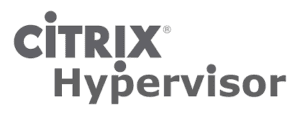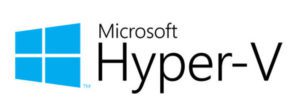Server virtualization has been with us since the rapid rise of VMware almost two decades ago. With server sprawl so prevalent in the days when there were endless Windows boxes strewn across the data center or server room, it made perfect sense to consolidate multiple physical servers into one physical machine containing many virtual machines (VMs). This immediately boosted that bane of IT in the early 2000s — poor rates of server utilization due to the model of one physical server hosting one application.
Server virtualization, then, is the process of dividing a physical server into many virtual servers. It is accomplished via software that enables each VM to run its own operating systems independently within a virtualization layer.
While VMware was the early pioneer, it doesn’t have it all its own way. Virtualization platforms from Microsoft, Red Hat, Citrix, and others make this a hot area of competition. Vendors continually update their offerings with features that improve networking performance, incorporate containers, or provide greater cloud functionality, to cite a few examples.
Benefits of Server Virtualization
Server virtualization has many benefits. As a result, IT adopts it due to a variety of use cases. These include:
- Server utilization. Typical physical server utilization can be as low as 10%. In consolidating multiple workloads by virtualizing the server, utilization levels can be increased by as much as 80%, affording significant cost savings.
- Simplified maintenance. Having fewer servers immediately means that IT’s maintenance burden is reduced.
- Greater control of assets. Virtualization makes it much easier to provision VMs, distribute patches, monitor performance, and a host of other tasks.
- Centralizing and consolidating management of workloads. Virtualization arms IT with the ability to monitor workloads, rapidly redistribute tasks to VMs and CPUs based on performance metrics, and direct workloads more evenly across the organization.
- Security. By virtualizing servers, data is better safeguarded from malware and ransomware through simplified backup, restore, and snapshot capabilities.
- Network management. The hypervisor keeps track of the networks that a VM needs to connect to, whether they are different physical networks or VLANs. This ensures that network access is established when a VM is started, no matter which host it starts on. For example, you can query hypervisors to identify what networks specific VMs are using and what the associated MAC is, making life easier for the network administrator. Further, it is easier to move a VM to another network or add additional virtual NICs.
Also read: Hyperconverged Infrastructure is Reshaping IT Management
Server Virtualization Software Selection
Those in the process of selecting server virtualization software, should pay attention to several key areas.
Operating System Support
Obviously, any virtualization platform should support whatever operating systems (OS) are in use in the organization. Note, though, that some server virtualization varieties are more suited to a specific OS, while others are agnostic.
Vendor Preference
Some organizations are committed to vendors such as Microsoft, VMware, Oracle, IBM, or Citrix. In those cases, it doesn’t usually make sense to choose a hypervisor that goes against the grain. Those settled on Microsoft, for example, should probably stick to Hyper-V. Similarly, those heavily invested in the open source world, should probably stick to open source platforms such as Red Hat or Proxmox.
Scalability
Some virtualization platforms scale better than others. If scalability is important, it may be wise to pay more for a platform that provides greater scalability features and offers the underlying infrastructure to deal with a huge number of VM. Further, scalability can work both ways. Some platforms do a better job than others of ramping up and down VM numbers due to seasonal demands and other factors.
Resource Consumption
Some virtualization software is more memory intensive than others. Therefore, simplicity or complexity of the virtualization environment must be considered. For basic needs, opt for a solution that saves headroom mainly for VMs without loading up the platform with a host of unnecessary bells and whistles. But others need those advanced features and so should opt for more sophisticated platforms that demand more in terms of memory and CPU power.
Also read: Transforming Networks: From Virtualization to Cloudification
Top Virtualization Software
There are many choices out there for server virtualization software. Here are our top picks in no particular order:
- Citrix Hypervisor
- Red Hat Virtualization
- VMware vSphere
- Proxmox VE
- Microsoft Hyper V
- Nutanix AHV
- Virtuozzo
- Oracle PowerVM
- IBM VM VirtualBox
Citrix Hypervisor

Key Differentiators
- Enterprise-grade feature set
- Simplified management across networks and virtualization environments
- Moves GPU-accelerated VMs between hosts with NVIDIA vGPU live migration to make graphical workloads more agile.
- Hypervisor Introspection (developed in conjunction with Bitdefender) can reduce the attack surface that can come from legacy, unprotected, or misconfigured browsers and careless browsing activity.
- Support for PVS-Accelerator, which enhances boot performance in Citrix deployments by providing a cache to improve VM boot storm performance and reduce network utilization.
- Licensed on a per-socket basis rather than per-core.
Red Hat Virtualization

Key Differentiators:
- Lower total cost of ownership (TCO) as the software is open source. Users pay for the service and support from Red Hat.
- Improved security: The code is backed by a team of engineers who monitor, identify, and address risks to protect data from security concerns.
- No vendor lock-in as open source software is employed.
- High performance.
- Support cases are routed to a product specialist. Resolutions enable future product updates, making users a participant in improving the technology.
- A community driven knowledge provides a vast amount of information as well as resources for assistance.
Also read: The Growing Value of a Microservice Architecture
VMware vSphere

Key Differentiators
- It has been rearchitected with native Kubernetes to allow users to modernize the 70 million+ workloads now running on vSphere.
- Containerized applications can be run alongside existing enterprise applications in a simple using vSphere with Tanzu.
- Developer-ready infrastructure helps to align DevOps and IT teams, and simplify cloud operations.
- Scalability: Deliver Monster VMs designed for SAP HANA, Epic Operational Databases, and more. This enables a vSphere infrastructure to support 50% more hosts per cluster.
- GPUs: Provide AI/ML infrastructure using GPUs to simplify software upgrades, patching and firmware updates, as well as add greater security to hybrid cloud infrastructure.
Proxmox VE
Proxmox VE (virtual environment) is another open-source server management alternative. It integrates KVM hypervisor and LXC, software-defined storage, and networking functionality on a single platform. The user interface makes it relatively easy to manage VMs and containers, high availability clusters, or integrated disaster recovery tools. Based on Debian GNU/Linux, it uses a customized Linux kernel. This platform would be an option for those comfortable with the nuances of open source code.
Key Differentiators
- Low cost due to the use of open source
- Virtualize demanding Linux and Windows application workloads: you can run both Windows and Linux in VMs where each VM has private virtualized hardware: a network card, disk, graphics adapter, etc.
- Can dynamically scale computing and storage
- Hands-on training is available to master the concepts and components of Proxmox VE.
- Enterprise features are relatively easy to manage.
Microsoft Hyper-V

Key Differentiators
- Tight integration with Azure, Windows, Office 365, and other Microsoft products.
- Simplifies the expansion of establishment of a private cloud environment.
- Ability to form a common identity platform with Active Directory across all Microsoft platforms.
- Centralized management of all Windows, Azure and Hyper-V workloads running on-premises and in the cloud.
- Good protection for VM workloads from unauthorized access, with Shielded Virtual Machines for Windows Server or Linux workloads.
- Protect network traffic with Encrypted Subnets.
Nutanix AHV
Nutanix AHV aims to simplify the world of server virtualization. It does away with the model that views virtualization as a complex layer of the IT stack that is licensed, deployed, and managed separately. Instead, Nutanix AHV offers a secure, enterprise-grade virtualization solution that can provision and optimize VMs and containers, monitor infrastructure and application performance, scale your environment, and automate mundane IT operations. Nutanix is a potential candidate for startups that have not yet become invested in one of the major platforms, or companies wishing to completely overhaul their entire infrastructure.
Key Differentiators
- Virtualization management is combined with Nutanix HCI (Hyper-Converged Infrastructure.
- Smooth implementation of security, network microsegmentation, as well as built-in configuration audit and remediation.
- Lower operational costs reported compared to other virtualization solutions.
- AHV is tuned to deliver optimal application performance on Nutanix HCI for the demanding enterprise applications.
- HCI software keeps data local to the application to ensure high performance, while decreasing network traffic.
- Machine learning technology balances resource consumption.
Also read: Understanding the Role of Enterprise Data Fabrics
Virtuozzo

Key Differentiators
- Its open source approach efficiently makes use of existing hardware.
- Virtuozzo containers are based on the Linux kernel and offer good performance.
- Security is built-in via encrypted containers to protect production workloads.
- Compatibility with KVM
- Integrated with software-defined storage and networking.
Oracle VM VirtualBox

Key Differentiators
- For enterprise as well as home use.
- Freely available as open source software under a GNU license.
- VirtualBox runs on Windows, Linux, Macintosh, and Solaris hosts.
- Supports guest OSes such as Windows (NT 4.0, 2000, XP, Server 2003, Vista, Windows 7, Windows 8, Windows 10), DOS/Windows 3.x, Linux (2.4, 2.6, 3.x and 4.x), Solaris and OpenSolaris, OS/2, and OpenBSD.
IBM PowerVM

Key Differentiators
- Scale out or scale up virtualized deployments without underlying performance penalties
- Helps to provide cloud services faster by automating deployment of VMs and storage.
- Eliminate scheduled downtime by deploying live mobility between servers
- Optimized for AIX, IBM i, and Linux systems running on the Power platform.
Read next: Top Enterprise Networking Trends


